Canon CF-1 User Manual
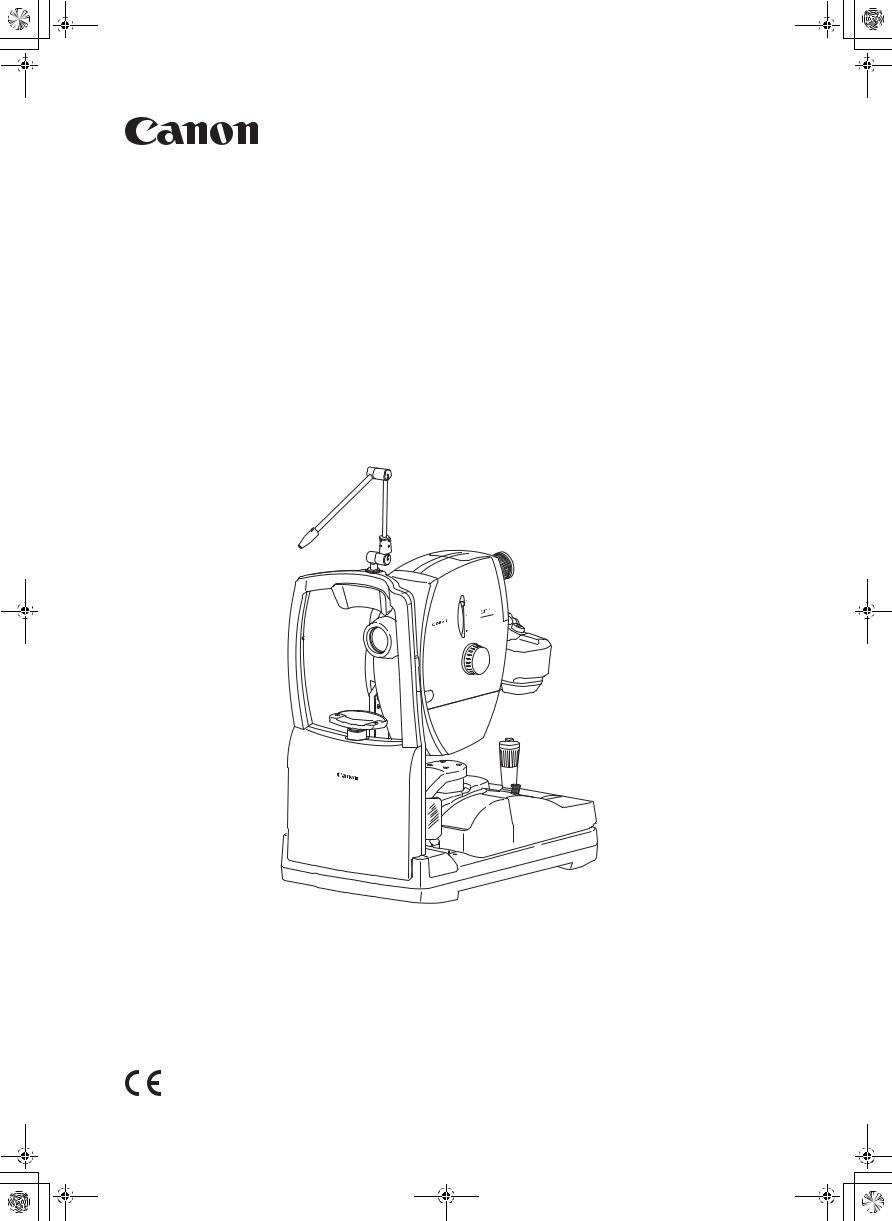
000_L-IE-5152E_CF-1.book Page 1 Monday, July 29, 2013 10:30 AM
Digital Retinal Camera
CF-1
Operation Manual
Make sure you read this manual before using the instrument.
Keep this manual in a safe place so that you can use it in the future.
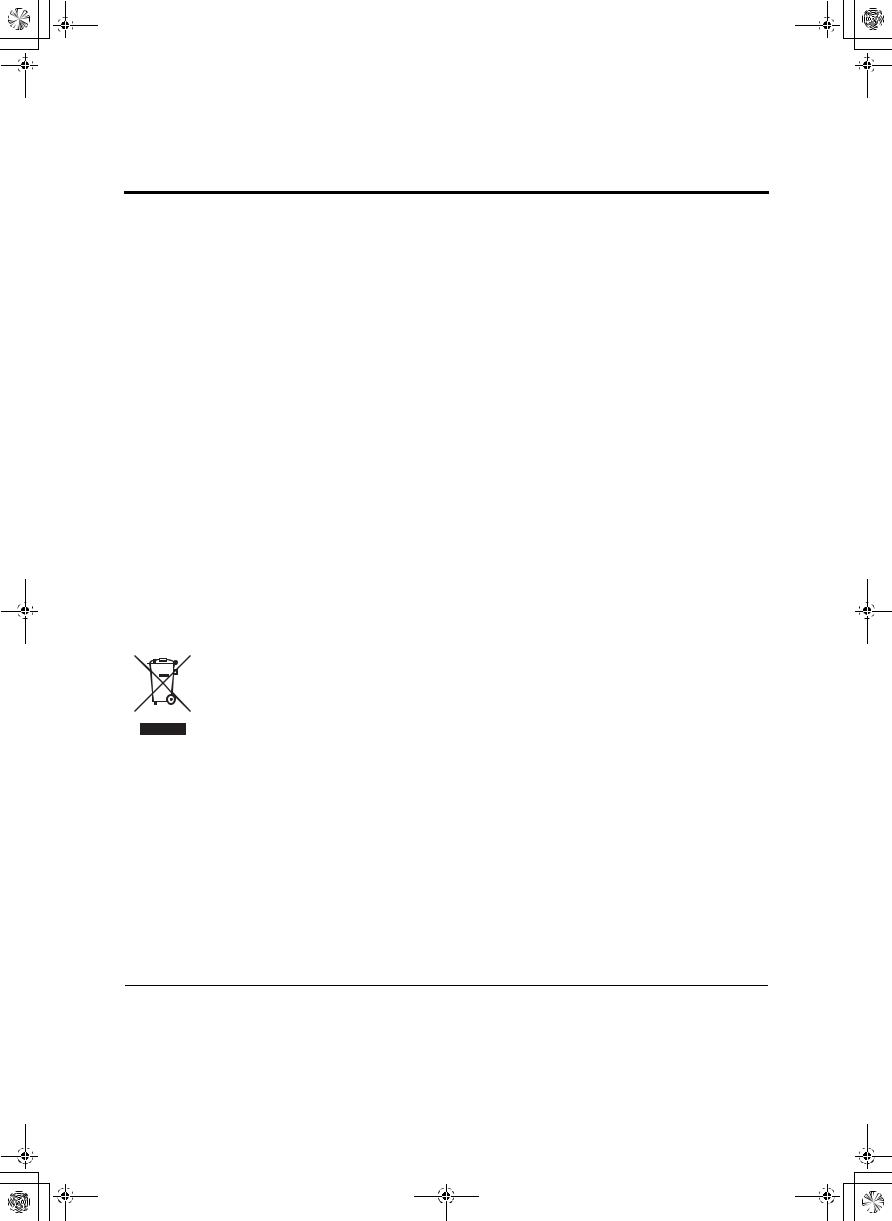
000_L-IE-5152E_CF-1.book Page 2 Monday, July 29, 2013 10:30 AM
PLEASE NOTE
1.Please contact your sales representative or local Canon dealer to have the instruments installed.
2.The computer and monitor used in the CF-1 fundus imaging system must conform to IEC60601-1/ UL60601-1 or IEC60950/UL60950.
Furthermore, all configurations shall comply with the system standard IEC 60601-1-1. If in doubt, consult your sales representative or local Canon dealer.
Be sure to also use an isolation transformer conforming to IEC60601-1/UL60601-1 when a computer or monitor conforming to IEC60950/UL60950 is used.
3.The user is responsible for the use and maintenance of the product.
We suggest that a dedicated individual is assigned responsibility for maintenance to ensure that the product is kept in good condition and can be used safely.
Medical products must be used only by a doctor or a legally qualified person.
4.This product may malfunction due to electromagnetic waves caused by cellular phones, transceivers, radiocontrolled toys, etc. Be sure to avoid having objects such as these, which affect this product, brought near the product.
5.In no event will Canon be liable for direct or indirect consequential damage arising out of the use of this product. Canon will not be liable for loss of image data for any reason.
6.Reading of images and storage of data must be performed in accordance with the law of the country where the product is being used. Also, the user is responsible for maintaining the privacy of image data.
7.The power cable supplied is designed to be used solely with this camera. Do not use it for any other product.
8.Canon reserves the right to change the specifications, configuration and appearance of the product without prior notice.
European Union (and EEA*) only.
This symbol indicates that this product is not to be disposed of with your household waste, according to the WEEE Directive (2002/96/EC) and your national law. This product should be handed over to a designated collection point, e.g., on an authorized one-for-one basis when you buy a new similar product or to an authorized collection site for recycling waste electrical and electronic equipment (EEE). Improper handling of this type of waste could have a possible negative impact on the environment and human health due to potentially hazardous substances that are generally associated with EEE. At the same time, your cooperation in the correct disposal of this product will contribute to the effective usage of natural resources. For more information about where you can drop off your waste equipment for recycling, please contact your local city office, waste authority, approved WEEE scheme or your household waste disposal service. For more information regarding return and recycling of WEEE products, please visit www.canon-europe.com/weee.
*EEA : Norway, Iceland and Liechtenstein
©CANON INC. 2010
All rights reserved.
Under copyright laws, this manual may not be copied, in whole or in part, without the written consent of Canon.
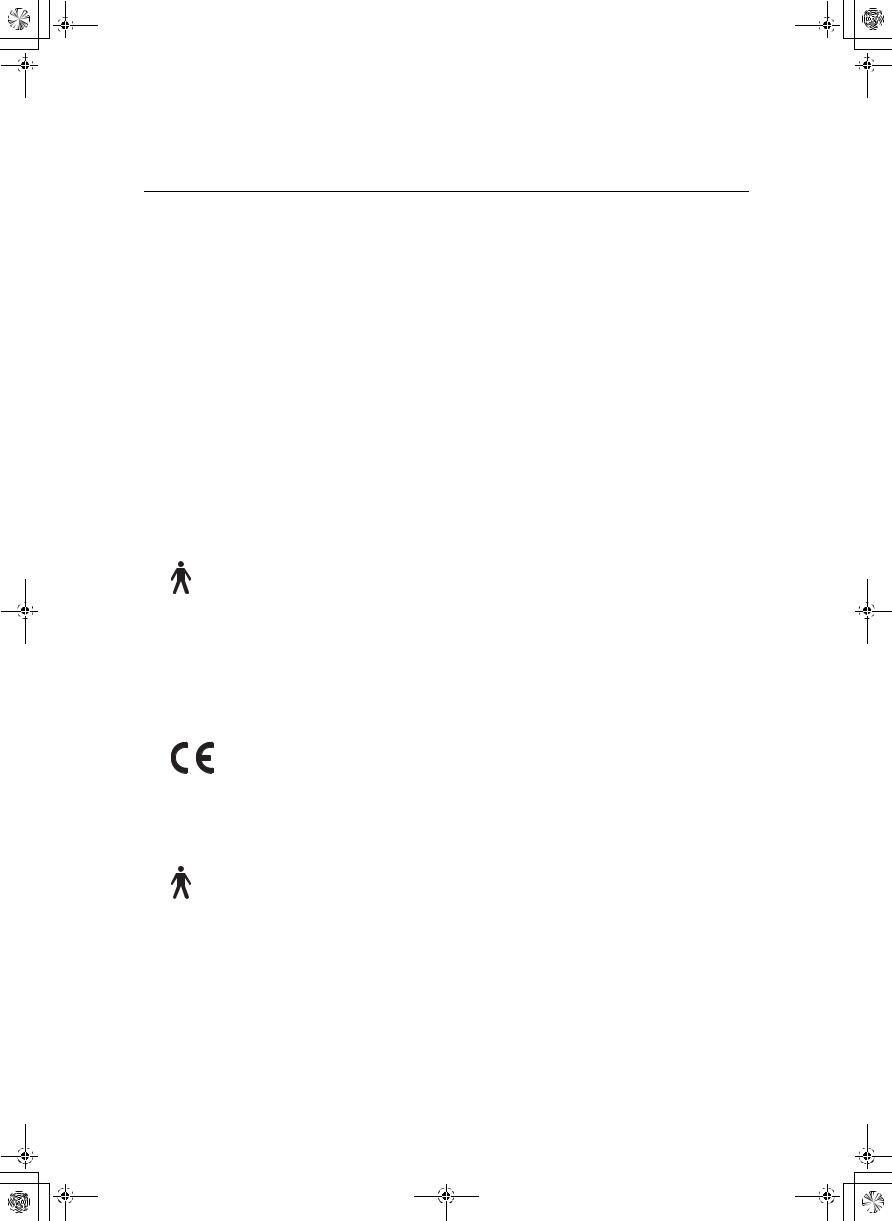
000_L-IE-5152E_CF-1.book Page 3 Monday, July 29, 2013 10:30 AM
Safety Information
Regulations
This instrument conforms to IEC 60601-1-2:2001/A1:2004 and IEC 60601-1-2:2007.
For USA and Canada
•When the CF-1 is going to be operated at a voltage of 240V in USA or Canada, be sure to connect the instrument to a center tapped voltage source.
•This instrument is CLASS I EQUIPMENT according to UL60601-1.
WITH RESPECT TO ELETRIC SHOCK, FIRE MECHANICAL |
MEDICAL EQUIPMENT WITH RESPECT |
|
TO ELETRICAL SHOCK, FIRE AND |
||
AND OTHER SPECIFIED HAZARDS ONLY IN |
||
MECHANICAL HAZARDS ONLY IN |
||
ACCORDANCE WITH CAN/CSA C22.2 NO. 601.1, |
||
ACCORDANCE WITH UL60601-1 |
||
MEDICAL EQUIPMENT CERTIFIED FOR CANADA |
||
<CONTROL NUMBER 41C4> |
||
|
•Grounding reliability can only be achieved when the equipment is connected to an equivalent receptacle marked “Hospital Only” or “Hospital Grade”.
•The following mark indicates that the instrument is Type B Applied Parts (forehead rest and chin rest).
•The degree of protection against ingress of water is IPX0.
•This equipment is not suitable for use in the presence of a flammable anaesthetic mixture with air, oxygen or nitrous oxide.
•The mode of operation is Continuous Operation.
For EU Countries
•The following mark shows compliance of the instrument with Directive 93/42/EEC.
•This instrument is CLASS I EQUIPMENT according to EN 60601-1:2006 and IEC 60601- 1:2005.
•The following mark indicates that the instrument is Type B Applied Parts (forehead rest and chin rest) according to EN 60601-1.
•The degree of protection against ingress of water is IPX0.
•This equipment is not suitable for use in the presence of a flammable anaesthetic mixture with air, oxygen or nitrous oxide.
•The mode of operation is Continuous Operation.
Für Deutschland
•Während des Betriebs liegt der Schalldruckpegel dieses Instruments bei 70 dB(A) oder weniger gemäß ISO 7779.
-3-
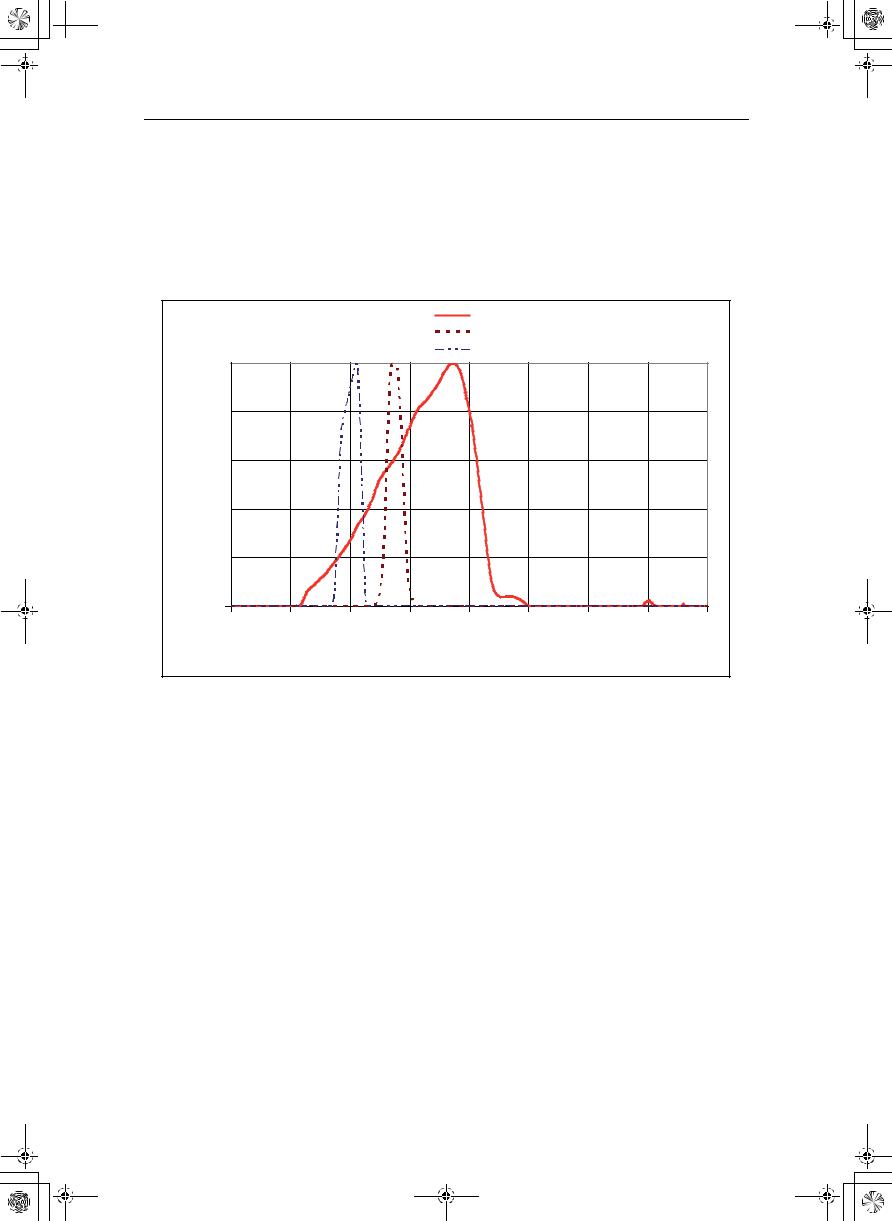
 000_L-IE-5152E_CF-1.book Page 4 Monday, July 29, 2013 10:30 AM
000_L-IE-5152E_CF-1.book Page 4 Monday, July 29, 2013 10:30 AM
Safety Information
ISO15004
This report provides information about the hazard to the examinee’s eyes in compliance with ISO15004 (1997).
1. The spectral characteristics of radiant flux exiting from this instrument are as follows:
Observation light at COLOR
Observation light at RED FREE
Observation light at FLUO
|
1.0 |
|
|
|
|
|
|
|
|
|
0.8 |
|
|
|
|
|
|
|
|
(Relative) |
0.6 |
|
|
|
|
|
|
|
|
|
|
|
|
|
|
|
|
|
|
irradiance |
0.4 |
|
|
|
|
|
|
|
|
0.2 |
|
|
|
|
|
|
|
|
|
|
|
|
|
|
|
|
|
|
|
|
0.0 |
|
|
|
|
|
|
|
|
|
300 |
400 |
500 |
600 |
700 |
800 |
900 |
1000 |
1100 |
Wavelength [nm]
2. Photochemical radiance
The photochemical radiances at each photography modes irradiated from this instrument to the examinee’s eyes are indicated below. All the values in the following table were measured when the instrument was operating at maximum light intensity and maximum aperture.
|
|
La [mW/cm²/sr] |
Lb [mW/cm²/sr] |
|
|
|
|
|
|
|
|
(1) |
Color |
0.352 |
0.347 |
|
|
|
|
(2) |
Red Free |
0.009 |
0.009 |
|
|
|
|
(3) |
Fluo |
0.252 |
0.252 |
|
|
|
|
3. The above values are spectrally weighted radiance on the pupil of examinee’s eyes in each wavelength.
La gives the measure for eyes in which the crystalline lens has been removed (aphakes) or for eyes of infants. Lb gives this measure for eyes in which the crystalline lens is in place except for infants’.
Spectrally weighted photochemical radiances La and Lb give a measure of the potential that exists for a beam of light to cause photochemical hazard to the retina.
-4-

000_L-IE-5152E_CF-1.book Page 5 Monday, July 29, 2013 10:30 AM
Safety Information
According to the American Conference of Governmental Industrial Hygienist (ACGIH) - Threshold Limit Values for Chemical Substances and Physical Agents (1995 - 1996 edition), at photochemical radiances La and Lb of 80 [mW/cm²/sr], 3 minutes irradiation would cause the retinal exposure dose level to attain the recommended exposure limit.
If the value of radiance was 40 [mW/cm²/sr], 6 minutes would be needed to reach the recommended limit.
That is, the retinal exposure dose for a photochemical hazard is a product of the radiance and the exposure time.
Since La and Lb of this instrument are extremely low, the risk of the photochemical hazard is also very low. While no acute optical radiation hazards have been identified for this instrument, it is recommended that the intensity of light directed into the examinee’s eye be limited to the minimum level which is necessary for diagnosis. Infants, aphakes and persons with diseased eyes will be at greater risk. The risk may also be increased if the person being examined has had any exposure to the same instrument or any other ophthalmic instrument using a visible light source during the previous 24 hours. This will apply particularly if the eye has been exposed to retinal photography.
-5-
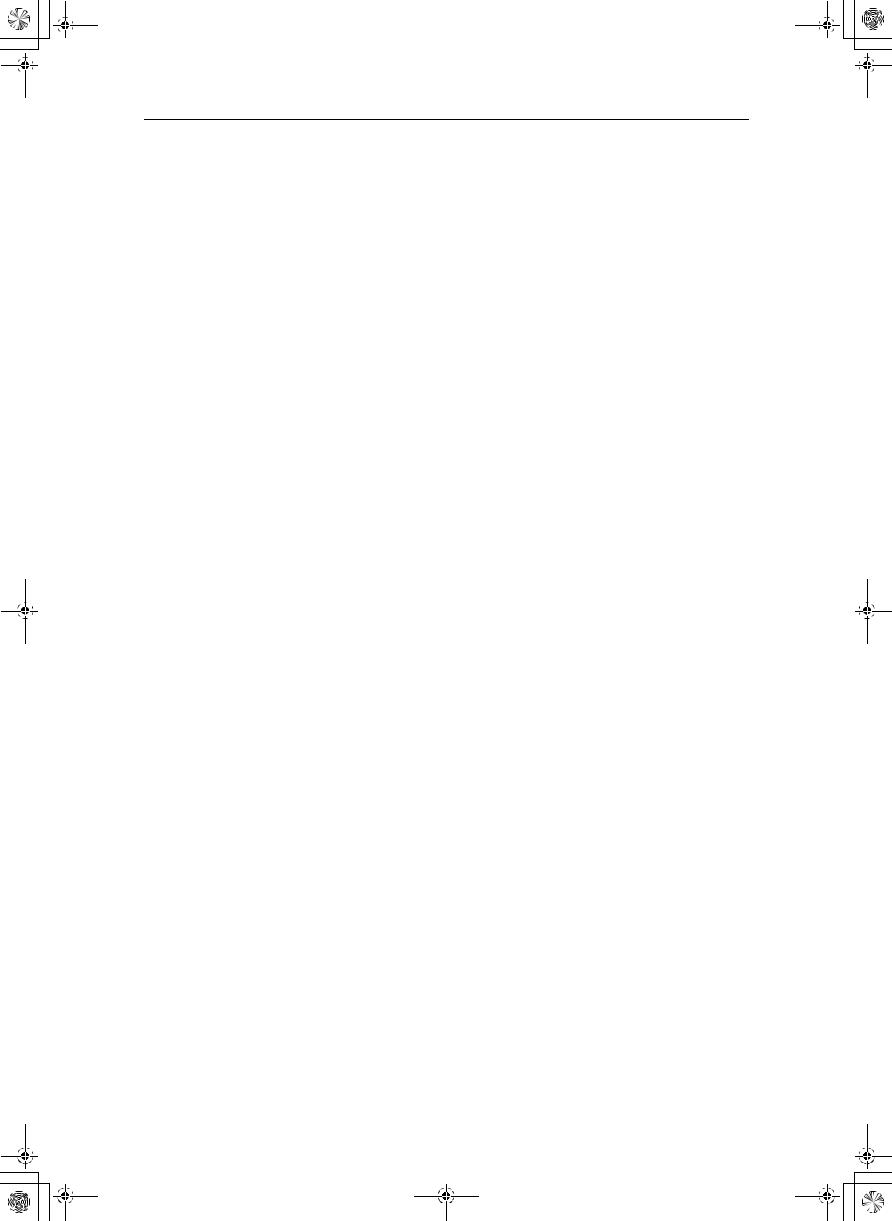
002_CF-1_anzen.fm Page 6 Monday, July 29, 2013 5:46 PM
Safety Information
EMC (Electromagnetic Compatibility)
The CF-1 is designed and tested to comply with IEC 60601-1-2 (EN 60601-1-2), the applicable regulations regarding EMC for medical devices and must be installed and put into service according to the EMC information stated as follows.
If this equipment causes harmful interference to other devices, which can be determined by turning the equipment off and on, the user is encouraged to try to correct the interference by one or more of the following measures:
•Reorient or relocate the receiving device.
•Increase the separation between the equipment.
•Connect this device into an outlet on a circuit different from that to which the other devices
are connected.
If the problem cannot be solved with the above measures, stop using this equipment and consult your sales representative or local Canon dealer.
Precautions on EMC
1.Medical electrical equipment needs special precautions regarding EMC and needs to be installed and put into service according to the EMC information provided in the manual.
2.Portable and mobile RF communications equipment can affect medical electrical equipment.
3.Information regarding the cable affecting EMC is as follows.
To maintain the optimum EMC performance, use only the designated cables.
Name |
Type |
Length |
Remarks |
|
|
|
|
AC Power cable |
BH4-6217 |
3.0 m fixed-length |
Supplied. |
|
|
|
|
USB cable |
KU20-3H (Shielded) |
Max 3.0 m |
Not Supplied. |
|
|
|
|
USB cable |
KU20-3H (Shielded) |
Max 3.0 m |
Not Supplied. |
|
|
|
|
4.The use of accessories, transducers and cables other than those specified, with the exception of transducers and cables sold by your sales representative or local Canon dealer as replacement parts for internal components, may result in increased emissions or decreased immunity of the CF-1.
5.The CF-1 should not be used adjacent to or stacked with other equipment; if adjacent or stacked use is necessary, the CF-1 should be observed to verify normal operation in the configuration in which it will be used.
-6-

000_L-IE-5152E_CF-1.book Page 7 Monday, July 29, 2013 10:30 AM
Safety Information
Guidance and Manufacturer’s Declaration for EMC Directive
Electromagnetic Emissions
The CF-1 is intended for use in the electromagnetic environment specified below. The user of the CF-1 should assure that it is used in such an environment.
Emission Test |
Compliance |
Electromagnetic Environment – Guidance |
|
|
|
|
|
|
|
|
|
RF emissions |
|
The CF-1 uses RF energy only for its internal function. |
|
|
Therefore, its RF emissions are very low and are not likely |
||
CISPR 11 |
GROUP 1 |
||
to cause any interference in nearby electromagnetic |
|||
EN 55011 |
|
||
|
equipment. |
||
|
|
||
|
|
|
|
RF emissions |
|
|
|
CISPR 11 |
Class A |
|
|
EN 55011 |
|
|
|
|
|
|
|
Harmonic emissions |
Class A |
The CF-1 is suitable for use in all establishments other |
|
EN IEC 61000-3-2 |
than domestic and those directly connected to the public |
||
|
low-voltage power supply network that supplies buildings |
||
|
|
used for domestic purposes. |
|
Voltage fluctuations/ |
|
||
|
|
||
flicker emissions |
Complies |
|
|
|
|
||
EN IEC 61000-3-3* |
|
|
|
|
|
|
* Not applicable to regions where the rated voltage is less than 220 V.
-7-
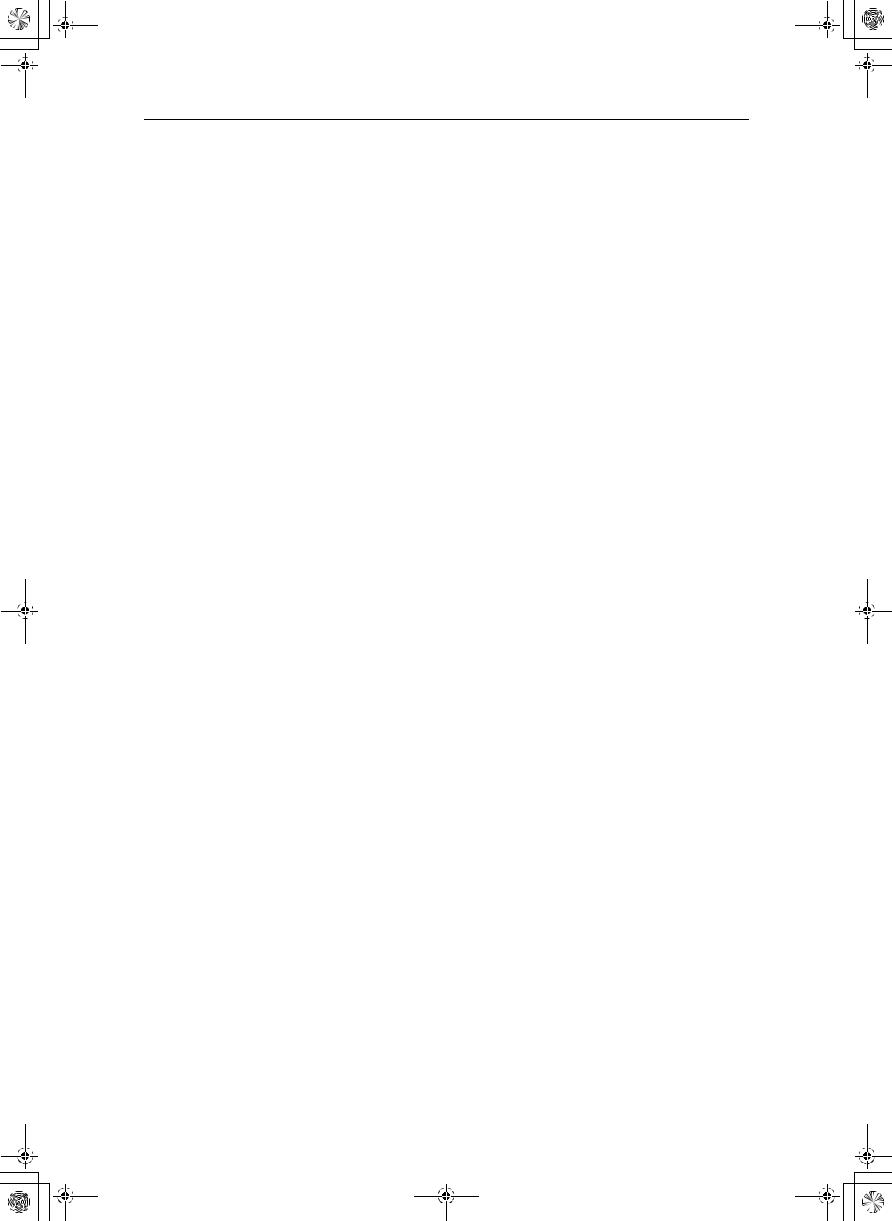
000_L-IE-5152E_CF-1.book Page 8 Monday, July 29, 2013 10:30 AM
Safety Information
Electromagnetic Immunity
The CF-1 is intended for use in the electromagnetic environment specified below. The user of the CF-1 should assure that it is used in such an environment.
Immunity Test |
IEC 60601 Test |
Compliance |
Electromagnetic Environment – |
|
Level |
Level |
Guidance |
||
|
||||
|
|
|
|
|
|
|
|
|
|
Electrostatic dis- |
±(2, 4, 6) kV |
±(2, 4, 6) kV |
Floors should be wood, concrete or |
|
charge (ESD) |
contact |
contact |
ceramic tile. If floors are covered with |
|
|
|
|
synthetic material, the relative humidity |
|
EN IEC 61000-4-2 |
±(2, 4, 8) kV air |
±(2, 4, 8) kV air |
should be at least 30%. |
|
|
|
|
|
|
Electrical fast tran- |
±2 kV for power |
±2 kV for power |
Mains power quality should be that of a |
|
supply lines |
supply lines |
|||
sient/burst |
||||
|
|
typical commercial or hospital environ- |
||
|
|
|
||
EN IEC 61000-4-4 |
±1 kV for input/ |
±1 kV for input/ |
ment. |
|
output lines |
output lines |
|
||
|
|
|||
|
|
|
|
|
|
±1 kV differen- |
±1 kV differen- |
Mains power quality should be that of a |
|
Surge |
tial mode |
tial mode |
||
|
|
|
typical commercial or hospital environ- |
|
EN IEC 61000-4-5 |
±2 kV common |
±2 kV common |
ment. |
|
|
mode |
mode |
|
|
|
|
|
|
|
|
<5% UT |
<5% UT |
|
|
|
(>95% dip in |
(>95% dip in |
|
|
|
UT) for 0.5 cycle |
UT) for 0.5 cycle |
|
|
Voltage dips, short |
40% UT |
40% UT |
Mains power quality should be that of a |
|
interruptions and |
(60% dip in UT) |
(60% dip in UT) |
typical commercial or hospital environ- |
|
ment. If the user of the CF-1 requires |
||||
voltage variations |
for 5 cycles |
for 5 cycles |
||
continued operation during power |
||||
on power supply |
|
|
||
|
|
mains interruptions, it is recommended |
||
input lines |
70% UT |
70% UT |
||
that the CF-1 be powered from an |
||||
EN IEC 61000-4-11 |
(30% dip in UT) |
(30% dip in UT) |
uninterruptible power supply or a bat- |
|
for 25 cycles |
for 25 cycles |
tery. |
||
|
||||
|
<5% UT |
<5% UT |
|
|
|
(>95% dip in |
(>95% dip in |
|
|
|
UT) for 5 sec |
UT) for 5 sec |
|
|
Power frequency |
|
|
Power frequency magnetic fields |
|
(50/60 Hz) |
|
|
||
|
|
should be at levels characteristic of a |
||
magnetic field |
3 A/m |
3 A/m |
||
typical location in a typical commercial |
||||
|
|
|
||
EN IEC 61000-4-8 |
|
|
or hospital environment. |
|
|
|
|
||
|
|
|
|
|
NOTE: UT is the AC mains voltage prior to application of the test level. |
||||
-8-
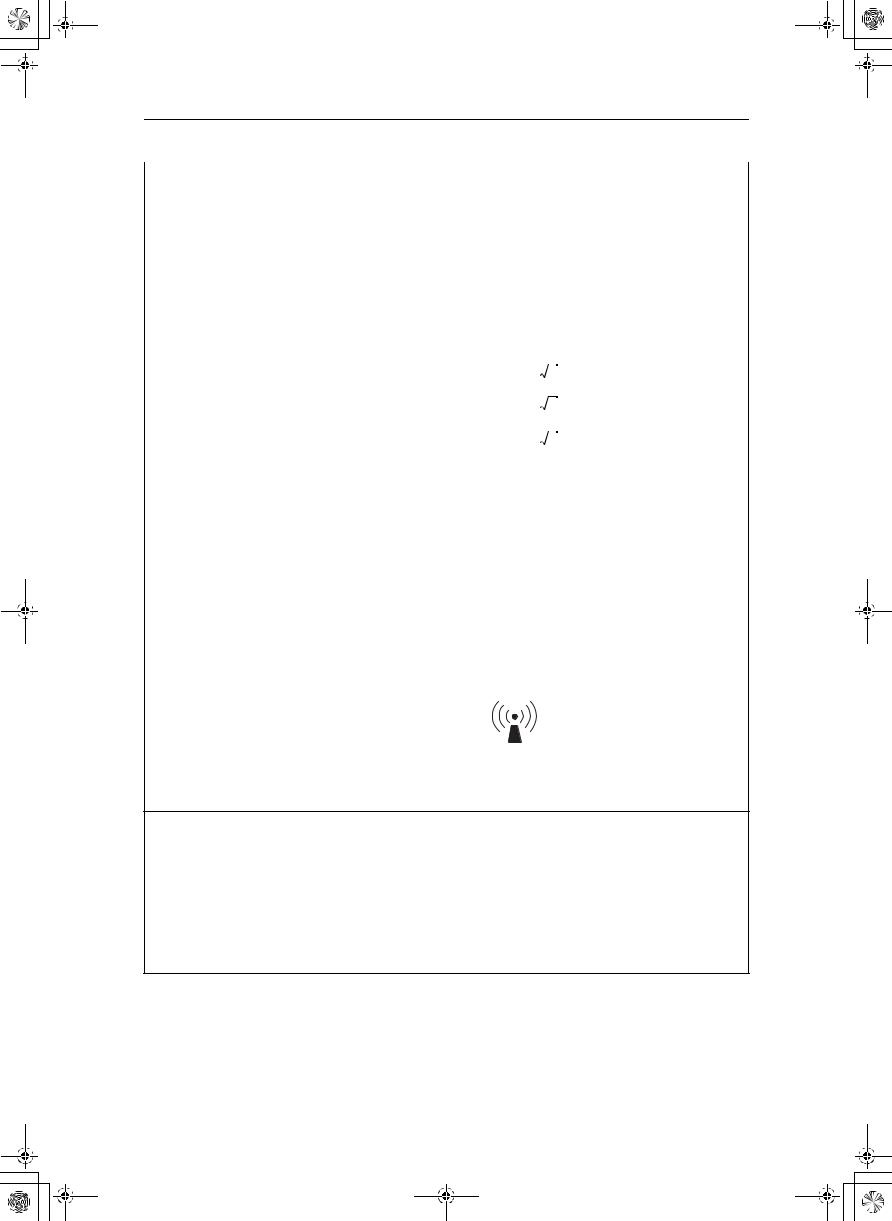
000_L-IE-5152E_CF-1.book Page 9 Monday, July 29, 2013 10:30 AM
Safety Information
Immunity Test |
IEC 60601 Test |
Compliance |
Electromagnetic Environment – Guidance |
||
Level |
Level |
||||
|
|
|
|||
|
|
|
|
||
|
|
|
|
||
|
|
|
Portable and mobile RF communications |
||
|
|
|
equipment should be used no closer to |
||
|
|
|
any part of the CF-1, including cables, |
||
|
|
|
than the recommended separation dis- |
||
|
|
|
tance calculated from the equation appli- |
||
|
|
|
cable to the frequency of the transmitter. |
||
|
|
|
Recommended separations distance |
||
|
|
|
d = 1.2 |
P |
|
|
3 Vrms |
|
d = 1.2 |
P 80 MHz to 800 MHz |
|
|
|
|
|
||
Conducted RF |
150 kHz to 80 |
3 Vrms |
d = 2.3 |
P 800 MHz to 2.5 GHz |
|
EN IEC 61000-4-6 |
MHz |
||||
|
|
|
|||
|
|
|
where P is the maximum output power rat- |
||
|
|
|
ing of the transmitter in watts (W) accord- |
||
Radiated RF |
3 V/m |
|
ing to the transmitter manufacturer and d |
||
3 V/m |
is the recommended separation distance |
||||
EN IEC 61000-4-3 |
80 MHz to 2.5 |
||||
|
in meters (m). |
||||
|
GHz |
|
|||
|
|
|
|
||
|
|
|
Field strengths from fixed RF transmitters, |
||
|
|
|
as determined by an electromagnetic site |
||
|
|
|
surveya, should be less than the compli- |
||
|
|
|
ance level in each frequency rangeb. |
||
|
|
|
Interference may occur in the vicinity of |
||
|
|
|
equipment marked with the following sym- |
||
|
|
|
bol: |
|
|
|
|
|
|
|
|
NOTE 1: At 80 MHz and 800 MHz, the higher frequency range applies.
NOTE 2: These guidelines may not apply in all situations. Electromagnetic propagation is affected by absorption and reflections from structures, objects and people.
aField strengths from fixed transmitters, such as base stations for radio (cellular/cordless) telephones and land mobile radios, amateur radio, AM and FM radio broadcast and TV broadcast cannot be predicted theoretically with accuracy. To assess the electromagnetic environment due to fixed RF transmitters, an electromagnetic site survey should be considered. If the measured field strength in the location where the CF-1 is used exceeds the applicable RF compliance level above, the CF-1 should be observed to verify normal operation. If abnormal performance is observed, additional measures may be necessary, such as reorienting or relocating the CF-1.
bOver the frequency range 150 kHz to 80 MHz, field strengths should be less than 3 V/m.
-9-
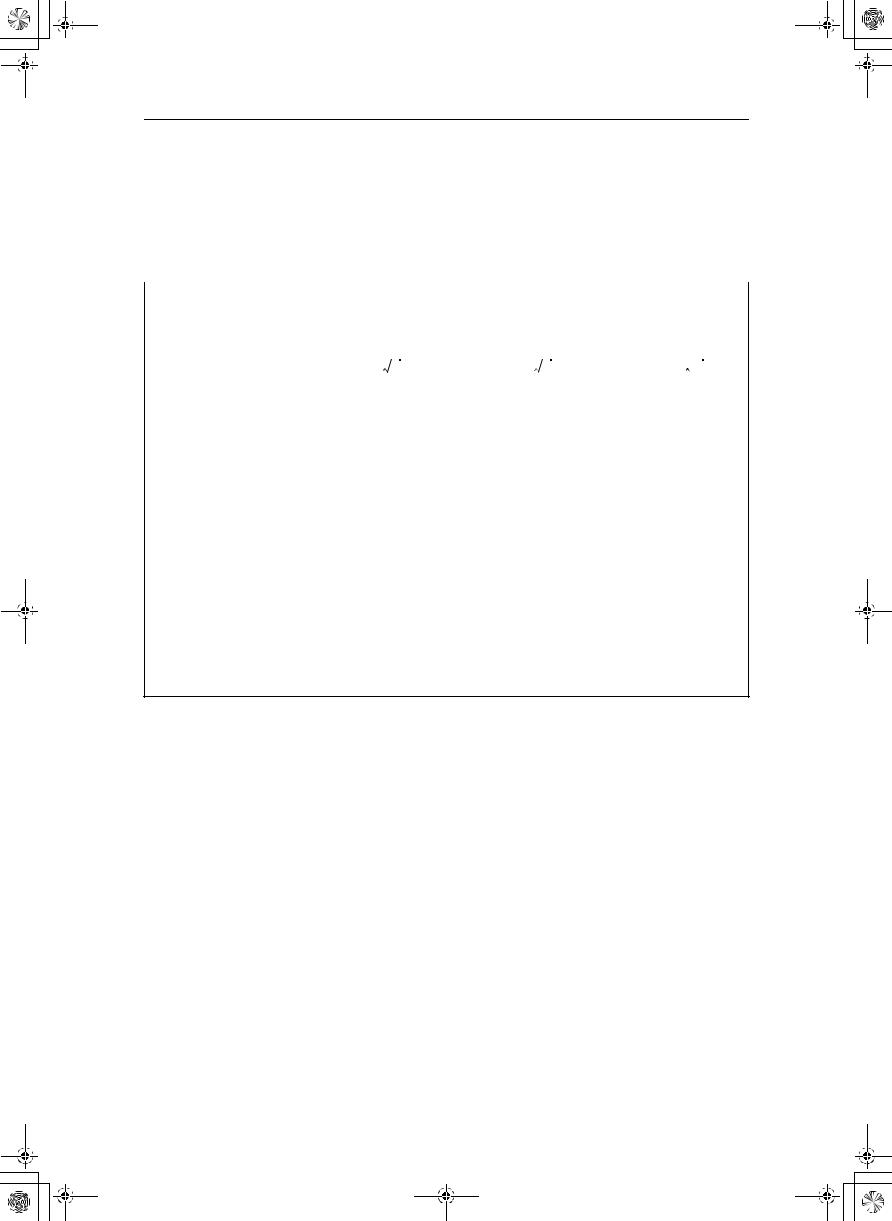
000_L-IE-5152E_CF-1.book Page 10 Monday, July 29, 2013 10:30 AM
Safety Information
Recommended Separation Distances
The CF-1 is intended for use in an electromagnetic environment in which radiated RF disturbances are controlled. The user of the CF-1 can help prevent electromagnetic interference by maintaining a minimum distance between portable and mobile RF communications equipment (transmitters) and the CF-1 as recommended below, according to the maximum output power of the communications equipment.
Rated maximum |
Separation distance according to frequency of transmitter |
|||
output power of |
|
m |
|
|
transmitter |
|
|
|
|
150 kHz ~ 80 MHz |
80 MHz ~ 800 MHz |
800 MHz ~ 2.5 GHz |
||
W |
||||
d = 1.2 P |
d = 1.2 P |
d = 2.3 P |
||
|
|
|
|
|
|
|
|
|
|
0.01 |
0.12 |
0.12 |
0.23 |
|
|
|
|
|
|
0.1 |
0.38 |
0.38 |
0.73 |
|
|
|
|
|
|
1 |
1.2 |
1.2 |
2.3 |
|
|
|
|
|
|
10 |
3.8 |
3.8 |
7.3 |
|
|
|
|
|
|
100 |
12 |
12 |
23 |
|
|
|
|
|
|
For transmitters rated at a maximum output power not listed above, the recommended separation distance d in meters (m) can be estimated using the equation applicable to the frequency of the transmitter, where P is the maximum output power rating of the transmitter in watts (W) according to the transmitter manufacturer.
NOTE 1: At 80 MHz and 800 MHz, the separation distance for the higher frequency range applies.
NOTE 2: These guidelines may not apply in all situations. Electromagnetic propagation is affected by absorption and reflection from structures, objects and people.
-10-

000_L-IE-5152E_CF-1.book Page 11 Monday, July 29, 2013 10:30 AM
Safety Information
General Safety Information
Follow the safety instructions in this manual and all warnings and cautions printed on the warning labels. Ignoring such cautions or warnings while handling the product may result in injury or accident. Be sure to read and fully understand the manual before using this product. Keep this manual for future reference.
Meaning of Caution Signs
To protect the safety of users and others and to prevent accidents, this operation manual utilizes the symbols and text shown below in warnings and cautions. Read the meanings of these caution signs and the Safety Precautions (see page 12), and follow the safety instructions.
! |
WARNING |
This indicates a potentially hazardous situation which, if not heeded, could |
result in death or serious injury to you or others. |
||
|
|
|
! |
CAUTION |
This indicates a hazardous situation which, if not heeded, may result in minor |
or moderate injury to you or others, or may result in machine damage. |
||
|
|
|
|
NOTE |
This is used to emphasize essential information. |
|
Be sure to read this information to avoid incorrect operation. |
|
|
|
|
|
|
|
-11-
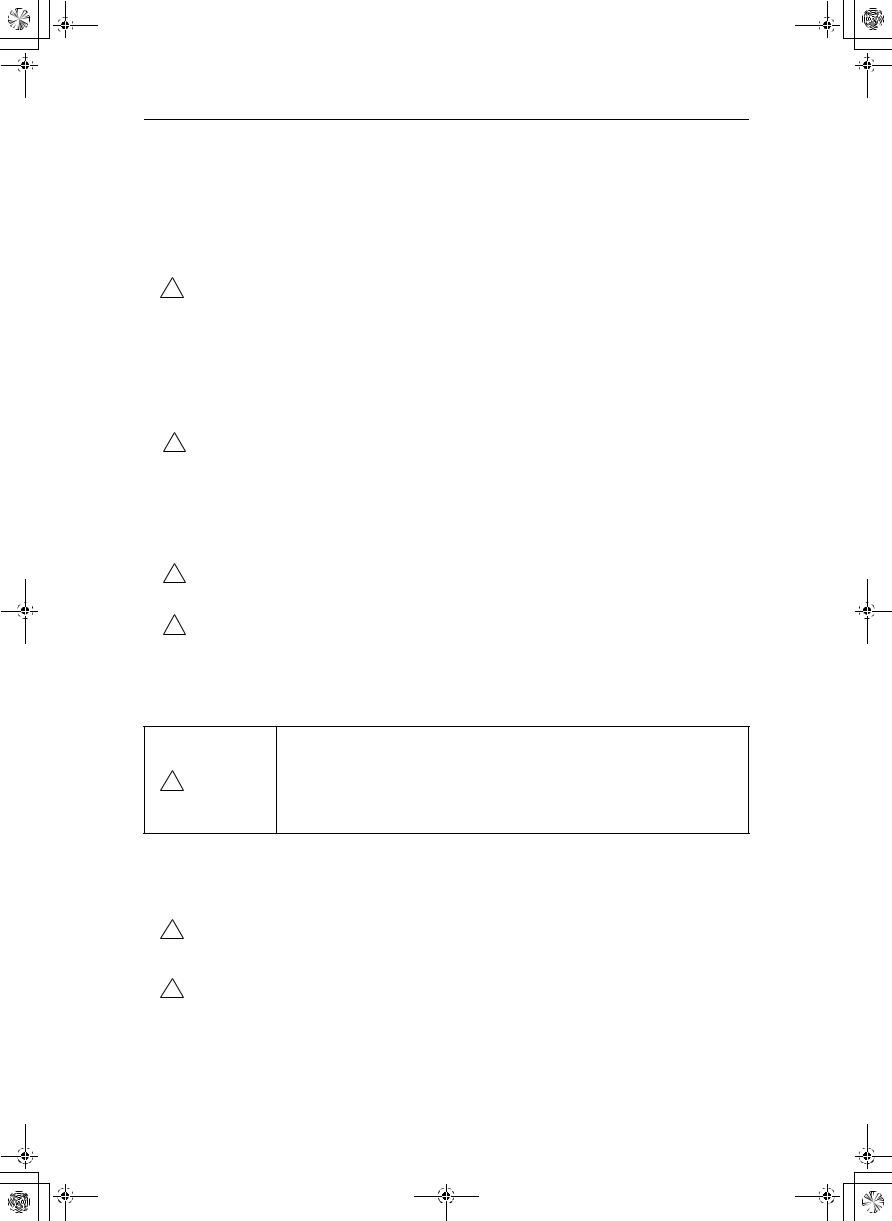
000_L-IE-5152E_CF-1.book Page 12 Monday, July 29, 2013 10:30 AM
Safety Information
Safety Precautions
Be sure to follow the safety instructions below to ensure correct operation of the instrument.
Installation and Environment of Use
|
|
Do not use or store the instrument near any flammable chemicals such as |
|
|
alcohol, thinner, or benzine. If chemicals are spilled or evaporate, it may result |
! |
WARNING |
in fire or electric shock through contact with electric parts inside the |
|
|
instruments. Also, some disinfectants are flammable. |
|
|
Be sure to exercise caution when using them. |
|
|
|
|
|
Do not use or store the instrument in a location with the conditions listed |
|
|
below. Otherwise, it may result in failure or malfunction, fall or cause fire or |
|
|
injury. |
|
|
• Close to facilities where water is used. |
|
|
• Where it will be exposed to direct sunlight. |
|
|
• Close to air-conditioner or ventilation equipment. |
! |
CAUTION |
• Close to heat source such as a heater. |
|
|
• Surfaces or areas prone to vibration. |
|
|
• Insecure place. |
|
|
• Dusty environment. |
|
|
• Saline or sulfurous environment. |
|
|
• High temperature or humidity. |
|
|
• Freezing or condensation. |
|
|
|
! |
CAUTION |
Do not cover the vent holes on the cover. |
Otherwise, the temperature in the instrument may rise and cause fire. |
||
|
|
|
|
|
Place the instrument on a firm table. |
! |
CAUTION |
Do not place it extremely near the edge of a table or it may fall and cause |
|
|
damage or injury. |
|
|
|
Installation Operation
Do not connect the instrument except in the manner specified. Otherwise, fire or electric shock may result.
Also, when other equipment is going to be connected to the instrument using ! WARNING the connector for interface, be sure that leakage current is within the tolerable
value. For details, please contact your sales representative or local Canon dealer.
Power Supply
! |
WARNING |
Only operate with the type of power supply indicated on the rating label. |
Otherwise, fire or electric shock may result. |
||
|
|
|
|
|
Be sure to turn OFF the power before plugging or unplugging the cables as |
! |
WARNING |
indicated in this manual. Also, do not handle the cables with wet hands. |
Otherwise, you may get an electric shock that may result in death or serious |
||
|
|
injury. |
|
|
|
-12-
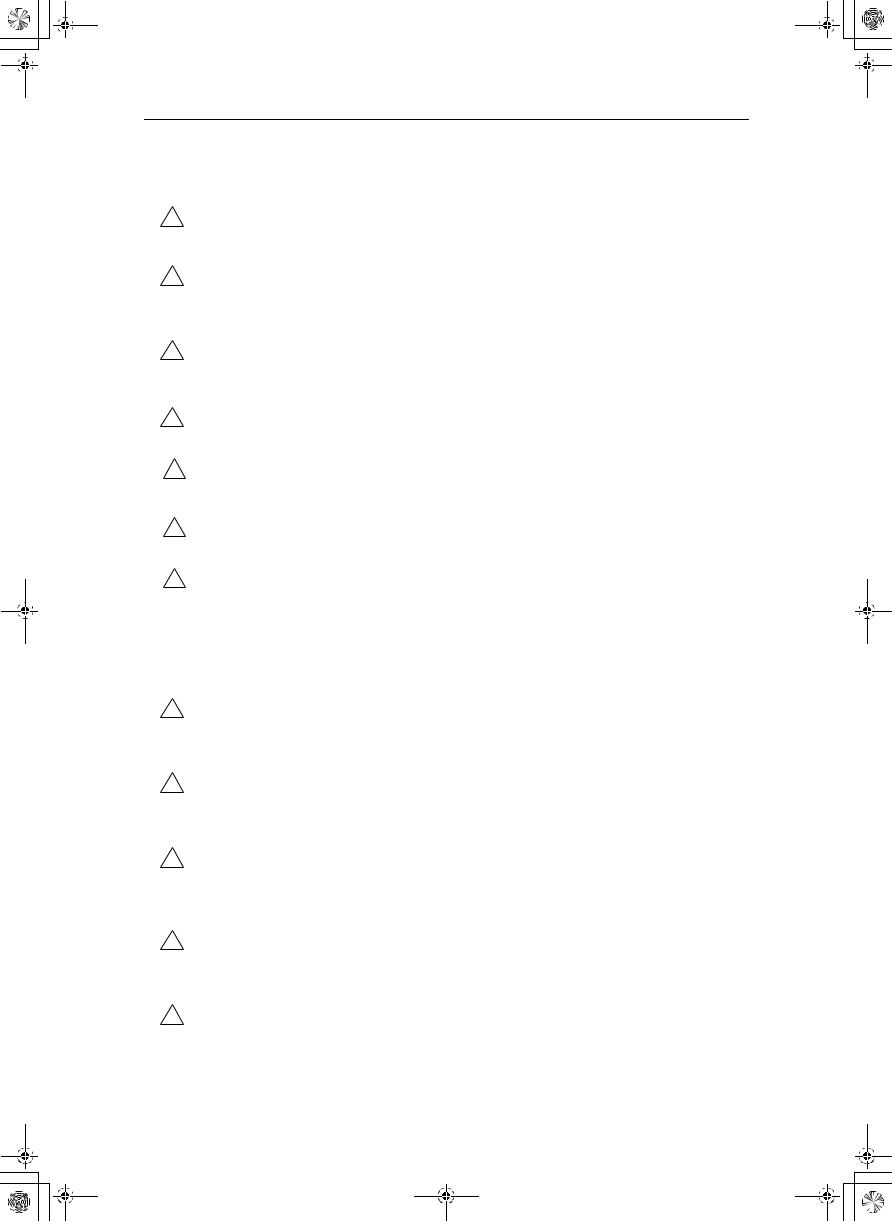
000_L-IE-5152E_CF-1.book Page 13 Monday, July 29, 2013 10:30 AM
Safety Information
Power Supply
|
|
Securely plug in the power cable into the AC outlet. |
! |
WARNING |
If contact failure occurs, or if dust or a metal object comes in contact with the |
|
|
exposed metal prong of the plug, fire or electric shock may result. |
|
|
|
|
|
Be sure to hold the plug to disconnect the power cable. |
! |
WARNING |
If you pull the cable, the core wire may be damaged, resulting in fire or electric |
|
|
shock. |
|
|
|
|
|
Do not cut or process the cables. Also, do not place anything heavy on the |
|
|
cables (including the instrument). Do not step on, pull bend, or bundle the |
! |
WARNING |
cables. |
|
|
Otherwise, the cable may be damaged, which may result in fire or electric |
|
|
shock. |
|
|
|
! |
WARNING |
Do not get the power for more than one instrument from the same AC outlet. |
Otherwise, it may result in fire or electric shock. |
||
|
|
|
|
|
Before connecting or disconnecting the cables, be sure to hold the instrument |
! |
CAUTION |
firmly in order to ensure safety. |
|
|
Otherwise, the main unit may fall over, possibly causing injury. |
|
|
|
|
|
The instrument is shipped with a grounding type (three-core) power cable. To |
! |
CAUTION |
avoid the risk of electric shock, this equipment must only be connected to a |
|
|
supply mains with protective earth. |
|
|
|
! |
CAUTION |
To make it easy to disconnect the plug at any time, avoid putting any |
obstacles near the outlet. |
||
|
|
|
Handling |
|
|
|
|
|
|
|
Never disassemble or modify the product as it may result in fire or electric |
! |
WARNING |
shock. Also, since the instrument incorporates high-voltage parts that may |
cause electric shocks and other hazardous parts, touching them may cause |
||
|
|
death or serious injury. |
|
|
|
|
|
Do not place anything on top of the instrument. |
! |
WARNING |
Otherwise, the object may fall and cause injury. |
Also, if metal objects such as a needle or clip falls into the instrument, or if |
||
|
|
liquid is spilled, it may result in fire or electric shock. |
|
|
|
|
|
When the instrument is going to be moved, be sure to turn OFF the power, |
! |
WARNING |
unplug the power cable from the AC outlet, and disconnect other cables. |
Otherwise, the cable may be damaged, which may result in fire or electric |
||
|
|
shock. |
|
|
|
|
|
When the instrument is going to be carried, be sure to tighten the stage unit |
|
|
lock, hold the indentations for lifting at the left and right of the bottom panel |
! |
WARNING |
and hold the instrument horizontally. |
|
|
Do not hold it by the digital camera or the head rest poles or other parts, as |
|
|
they may come off and result in injury. |
|
|
|
|
|
Do not hit or drop the instrument. The instrument may be damaged if it |
! |
WARNING |
receives a strong jolt, which may result in fire or electric shock if the |
|
|
instrument is used without first being repaired. |
-13-
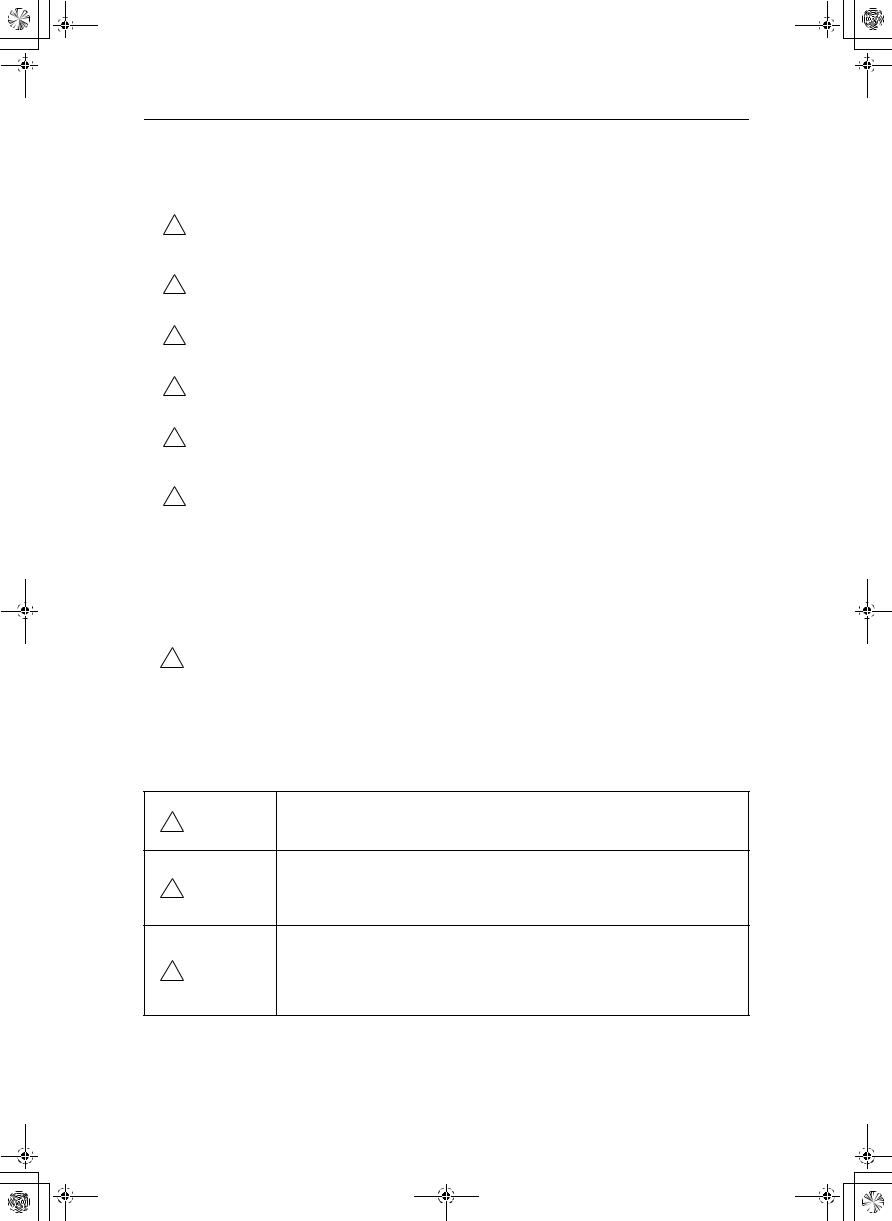
000_L-IE-5152E_CF-1.book Page 14 Monday, July 29, 2013 10:30 AM
Safety Information
Handling
|
|
To prevent the risk of infection, wipe the forehead rest with disinfectant |
! |
CAUTION |
ethanol for each patient. For details on how to disinfect, consult a specialist. |
The forehead rest may be corroded if a disinfectant other than those above is |
||
|
|
used. |
|
|
|
! |
CAUTION |
To ensure cleanliness, replace the chin rest paper for each patient. |
|
|
|
|
|
When adjusting the forward position of the main unit, be sure to move the |
! |
CAUTION |
main unit slowly toward the patient while looking from the side of the patient, |
|
|
to prevent accidental contact of the objective lens with the patient. |
|
|
|
! |
CAUTION |
Do not place your hands or fingers or allow the patient to place his/her hands |
or fingers between the stage and base. Otherwise, injury may occur. |
||
|
|
|
|
|
When the instrument is not going to be used, turn OFF the power. |
! |
CAUTION |
Also, unplug the power cable from the AC outlet when it is not going to be |
|
|
used for long periods of time. |
|
|
|
|
|
The instrument weighs approximately 26 kg (57 Ibs). Be sure that at least two |
! |
CAUTION |
people lift the instrument to transport it and that it is lifted by gripping the |
|
|
indentations for lifting. Otherwise, injury may occur. |
|
|
|
When Problem Occurs
|
|
Should any of the following occur, immediately turn OFF the power of each |
|
|
instrument, unplug the power cable from the AC outlet, and contact your sales |
|
|
representative or local Canon dealer. |
! |
WARNING |
• When there is smoke, an odd smell or abnormal sound. |
|
|
• When liquid has been spilled into the instrument or a metal object has |
|
|
entered through an opening. |
|
|
• When the instrument has been dropped and it is damaged. |
|
|
|
Maintenance and Inspection
For safety reasons, be sure to turn OFF the power when the inspections
! WARNING indicated in this manual are going to be performed. Otherwise, electric shock may result.
When the instrument is going to be cleaned, be sure to turn OFF the power,
and unplug the power cable from the AC outlet.
! WARNING Never use alcohol, benzine, thinner or any other flammable cleaning agents. Otherwise, fire or electric shock may result.
Clean the plug of the power cable periodically by unplugging it from the AC outlet and removing dust or dirt from the plug, its periphery and AC outlet with
! WARNING a dry cloth. If the cable is kept plugged in for a long time in a dusty, humid or sooty place, dust around the plug will attract moisture, and this could cause
insulation failure which could result in a fire.
-14-
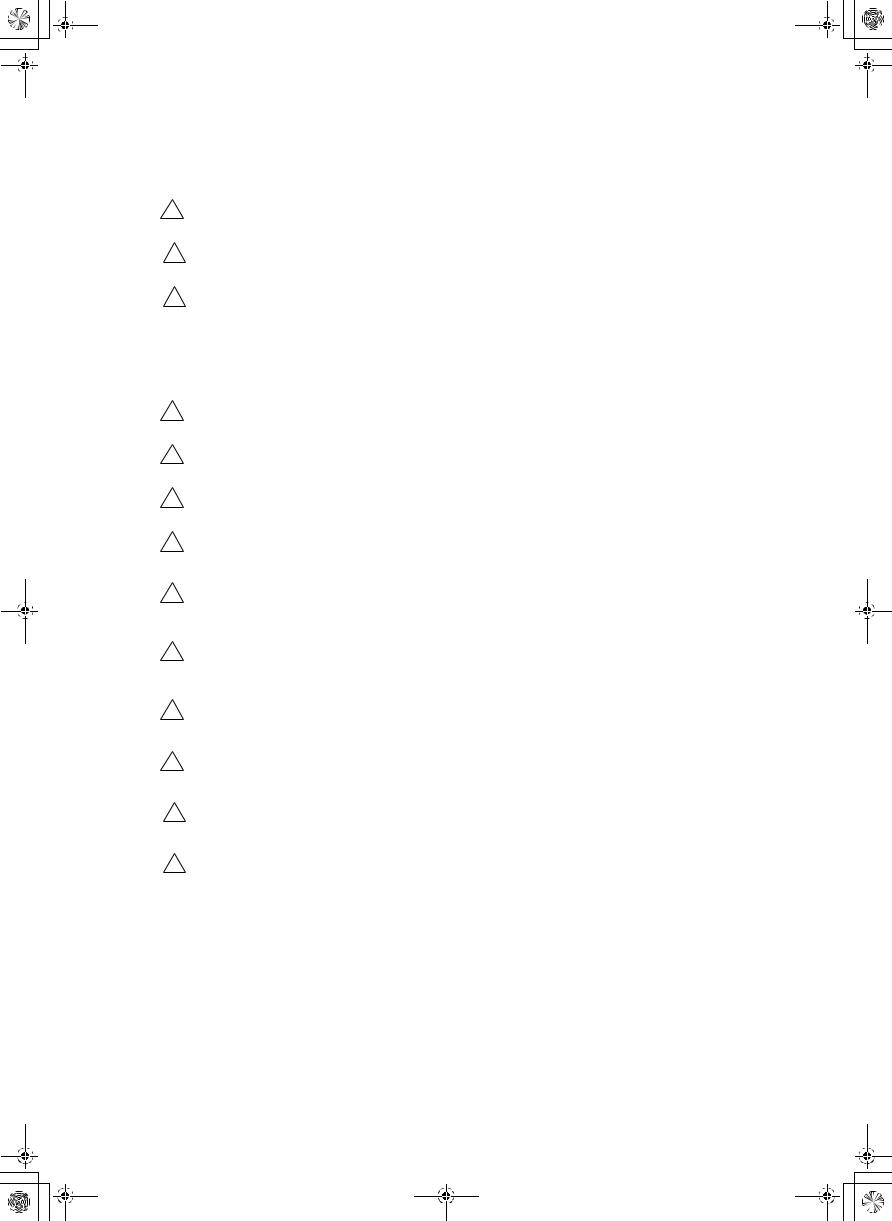
000_L-IE-5152E_CF-1.book Page 15 Monday, July 29, 2013 10:30 AM
|
|
Safety Information |
Maintenance and Inspection |
||
|
|
|
! |
WARNING |
The instrument must be repaired by a qualified engineer only. |
If it is not repaired properly, it may cause fire, electric shock, or accident. |
||
|
|
|
! |
CAUTION |
For safety reasons, be sure to inspect the instrument before using it. |
|
|
|
! |
CAUTION |
Always take a test image to check that there is no foreign matter present that |
can affect image readings before using the instrument (see page 44). |
||
|
|
|
System Use |
|
|
|
|
|
! |
WARNING |
Do not place multiple portable socket-outlets on the floor. Otherwise, fire or |
electric shock may result. |
||
|
|
|
! |
WARNING |
Do not connect an additional multiple portable socket-outlet or extension cord |
to the system. Otherwise, fire or electric shock may result. |
||
|
|
|
! |
WARNING |
Do not connect instruments that are not specified as part of the system. |
Otherwise, fire or electric shock may result. |
||
|
|
|
! |
WARNING |
For the system, use a power transformer of 1000 VA of the maximum |
permitted load. Otherwise, fire or electric shock may result. |
||
|
|
|
|
|
Use multiple portable socket-outlets only for supplying power to equipment |
! |
WARNING |
that is intended to form part of the system. Otherwise, fire or electric shock |
|
|
may result. |
|
|
|
|
|
Do not connect non-medical electrical equipment that has been supplied as a |
! |
WARNING |
part of the system to any power socket other than the multiple socket-outlets |
|
|
for the system. Otherwise, electric shock may result. |
|
|
|
|
|
Do not connect any electrical equipment that has not been supplied as a part |
! |
WARNING |
of the system to the multiple portable socket-outlets for the system. |
|
|
Otherwise, fire or electric shock may result. |
|
|
|
! |
WARNING |
Do not simultaneously touch a patient and non-medical electrical equipment. |
Otherwise, electric shock may result. |
||
|
|
|
|
|
For cleaning equipment forming part of the system, follow the instruction |
! |
CAUTION |
manual for the equipment. Otherwise, it may cause failure, an accident, or |
|
|
fire. |
|
|
|
! |
CAUTION |
Install the system in a way that enables the user to achieve optimal use. |
|
|
|
-15-
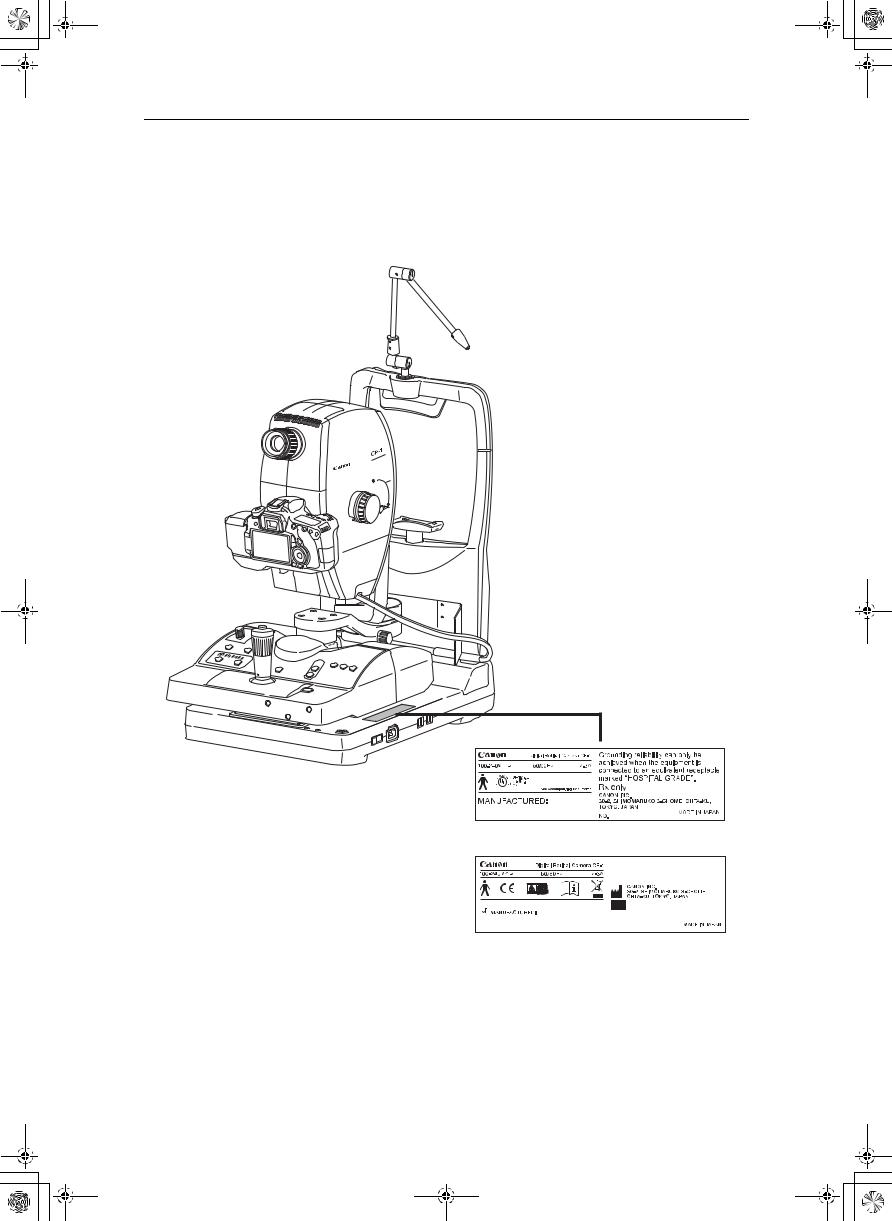
000_L-IE-5152E_CF-1.book Page 16 Monday, July 29, 2013 10:30 AM
Safety Information
Labels and Markings on the Instrument
The CF-1 has a label on it.
The label contents and its position are indicated below.
For 110-120V Countries |
For 230-240V Countries
-16-
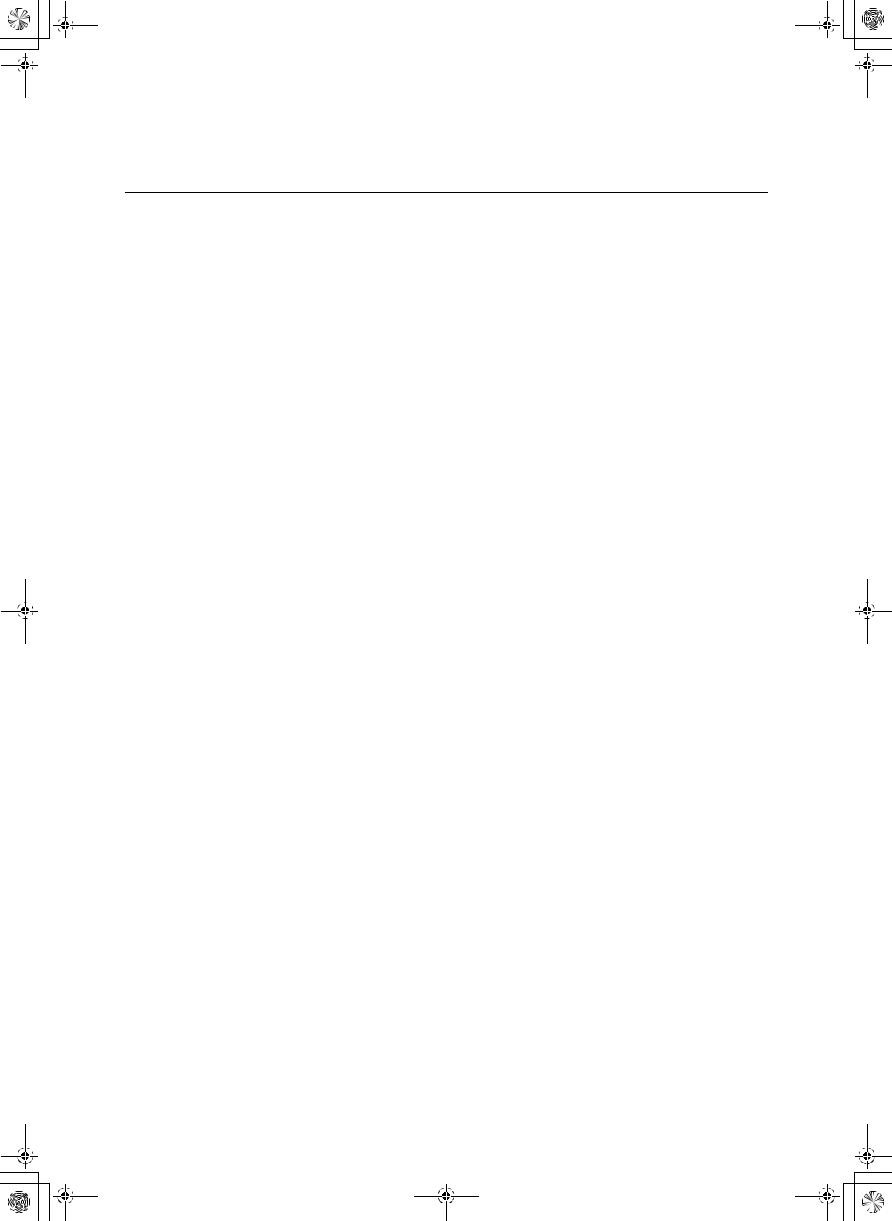
000_L-IE-5152E_CF-1.book Page 17 Monday, July 29, 2013 10:30 AM
|
Contents |
|
Safety Information............................................................................................ |
3 |
|
|
Regulations .............................................................................................. |
3 |
|
ISO15004 ................................................................................................ |
4 |
|
EMC (Electromagnetic Compatibility) ...................................................... |
6 |
|
Guidance and Manufacturer’s Declaration for EMC Directive ................. |
7 |
|
General Safety Information .................................................................... |
11 |
|
Labels and Markings on the Instrument ................................................ |
16 |
1. |
Features..................................................................................................... |
19 |
2. |
Notes for Using the Instrument .................................................................. |
20 |
3. |
Description ................................................................................................. |
22 |
|
3.1 Main Unit ......................................................................................... |
22 |
|
3.2 Operation Panel ............................................................................... |
24 |
4. |
Preparation ................................................................................................ |
25 |
4.1Turn ON the power. ......................................................................... 25
4.2Unlock the stage unit. ...................................................................... 26
4.3Adjust the viewfinder. ...................................................................... 26
5. Photography............................................................................................... |
27 |
|
5.1 |
Photography modes ........................................................................ |
27 |
5.2 |
Color photography mode ................................................................. |
28 |
5.3 |
Red-free Photography Mode ........................................................... |
34 |
5.4 |
OPTION Photography Mode ........................................................... |
35 |
5.5 |
Fluorescein Angiography Mode ....................................................... |
36 |
6. Photography auxiliary functions ................................................................. |
38 |
|
6.1 |
Using the focus indicator ................................................................. |
38 |
6.2 |
×2 photography function .................................................................. |
38 |
6.3 |
Small pupil photography function .................................................... |
39 |
6.4 |
Diopter compensation function ........................................................ |
39 |
6.5 |
Panning function and tilting function ................................................ |
40 |
|
6.5.1 Panning function .................................................................... |
40 |
|
6.5.2 Tilting function ....................................................................... |
40 |
-17-
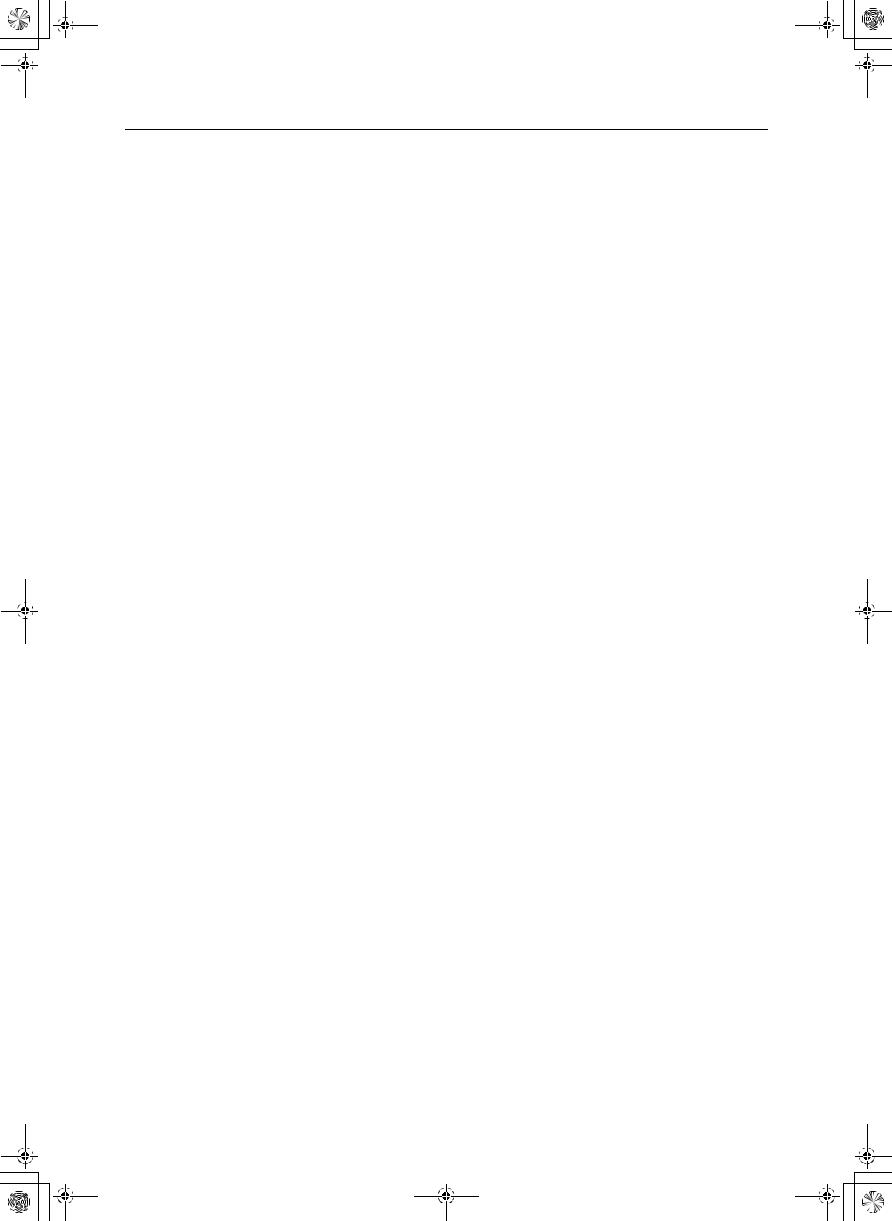
000_L-IE-5152E_CF-1.book Page 18 Monday, July 29, 2013 10:30 AM
Contents |
|
|
7. Daily Inspection and Maintenance ............................................................. |
41 |
|
7.1 |
Inspection ........................................................................................ |
41 |
|
7.1.1 Before Turning ON the Power ............................................... |
42 |
|
7.1.2 Turning ON the Power ........................................................... |
43 |
7.2 |
Before Calling a Service Technician ................................................ |
45 |
|
7.2.1 Troubleshooting ..................................................................... |
45 |
7.3 |
Cleaning and Disinfection ................................................................ |
48 |
|
7.3.1 Objective lens ........................................................................ |
48 |
|
7.3.2 Viewfinder .............................................................................. |
49 |
|
7.3.3 Forehead rest ........................................................................ |
49 |
|
7.3.4 Cover ..................................................................................... |
50 |
7.4 |
Refilling the Chin Rest Paper .......................................................... |
51 |
7.5 |
Power Cable Connections ............................................................... |
52 |
7.6 |
Installing and Removing the EOS Digital Camera ........................... |
53 |
|
7.6.1 Installing the EOS Digital Camera ......................................... |
53 |
|
7.6.2 Removing the EOS Digital Camera ....................................... |
54 |
7.7 |
Connecting the USB Cables ............................................................ |
56 |
7.8 |
Carrying the instrument ................................................................... |
57 |
8. Service Information .................................................................................... |
58 |
|
9. Main Specifications .................................................................................... |
59 |
|
10. Components............................................................................................. |
60 |
|
11. EN IEC60601-1-6:2010 |
|
|
Equipment Application Specification CF-1............................................... |
61 |
|
-18-
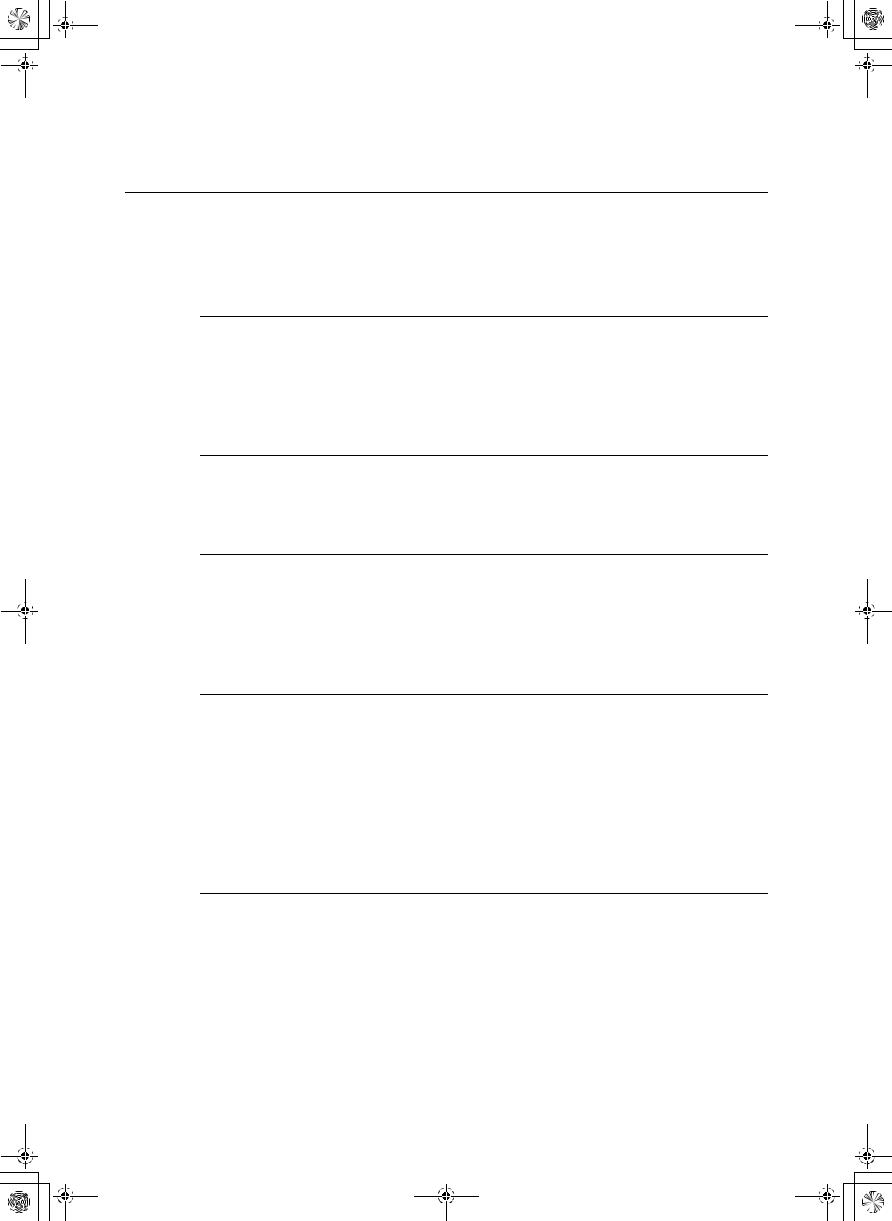
000_L-IE-5152E_CF-1.book Page 19 Monday, July 29, 2013 10:30 AM
1. Features
The Canon CF-1 digital retinal camera is used to observe the retinas of patients’ eyes and take photographic images of them (in 4 modes: color, red-free, OPTION and fluorescein angiography). The camera has the following features:
Compact size and superior operability
The controller has been designed as a single integrated unit, offering a compact size and light weight. The system offers enhanced ease of operation, making it significantly more efficient and comfortable to assist patients. The alignment procedure has also been improved now that the main unit can be raised and lowered by the operation lever and the chin rest is motor driven.
Panning and tilting functions provided as standard features
Panning and tilting functions are provided as standard options.
These functions make it possible to undertake focusing and panning or tilting at the same time.
Support for photographing small pupils
The camera can photograph small pupils when the pupils have a field angle of 50° and a diameter of 5.2 mm or greater.
If it is difficult to dilate the pupil of a patient’s eye, the small pupil photography function enables photographs to be taken of pupils with a diameter of ø4.3 mm or greater.
System optimized for digital photography
By using the Retinal imaging control software MYD (hereinafter called “control software”), the images photographed by the CF-1 can be browsed, processed, stored, output to the DICOM storage server, exported to DICOM files and output to an inkjet printer.
High-speed image transfer is enabled using the USB 2.0 interface. In addition, depending on whether color, red-free, OPTION or fluorescein angiography is established as the photography mode, the lighting system filter, flash intensity and EOS digital camera are automatically set and other steps are taken to optimize the photography workflow.
High picture quality, high-definition diagnostic images
Diagnostic images with a high picture quality and high definition can be obtained by using an EOS digital camera that incorporates a large, high-definition CMOS sensor.
-19-
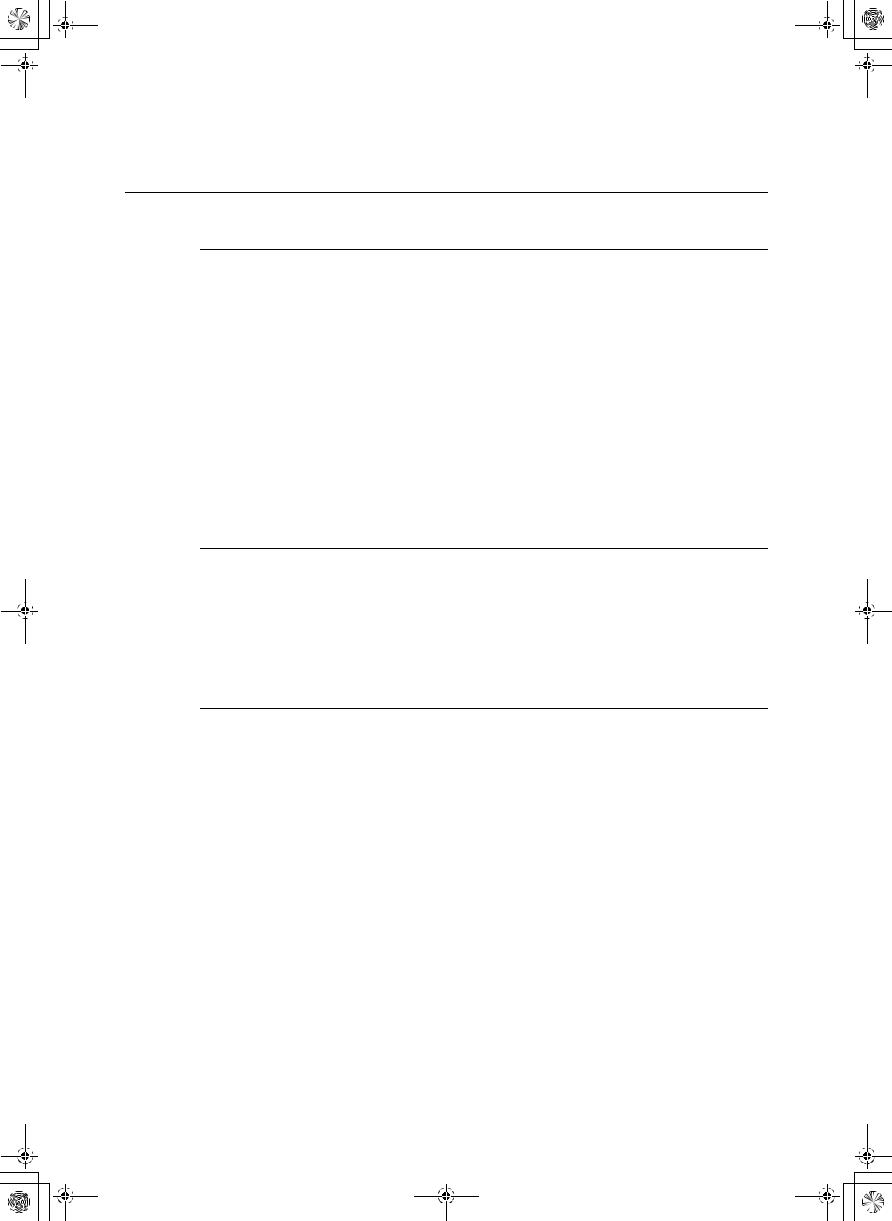
000_L-IE-5152E_CF-1.book Page 20 Monday, July 29, 2013 10:30 AM
2. Notes for Using the Instrument
Before Use
•Take a daily test image to ensure that there is no foreign matter present that can affect image readings.
•Check and clean the objective lens before taking an image, as any stains or scratches on it will appear as white spots.
•Sudden heating of the room in cold areas will cause condensation to form on the objective lens or on optical parts inside the instrument. In this case, wait until condensation disappears before performing photography.
•Do not touch the lens of the main unit or the mirror of the digital camera when attaching and detaching the digital camera from the main unit.
If any dirt, fingerprints, dust, or other foreign objects attach to the lens or mirror, you will not be able to take a good image.
•Be sure to adjust the diopter of the viewfinder to match the diopter of the photographer’s eye. Otherwise, focusing will not be able to be performed correctly.
After Use
•Turn OFF the power of the instrument. Place the cap over the objective lens, and place the dust cover over the instrument.
You will not be able to take a good picture when the objective lens is dirty.
•If the EOS digital camera is removed and left unattached, dust and other foreign objects can enter the main unit and the EOS digital camera. Always be sure to attach the caps to the respective mounts.
Cleaning and Disinfection
•Do not let the tip of a blower touch the objective lens.
•Do not wipe off or rub the objective lens when there is dust or other substances on it. This could scratch the lens surface.
•Never wipe the objective lens with disinfecting ethanol, eyeglass lens cleaner, or cleaning paper containing silicon.
The lens surface could be damaged or the surface may not be completely wiped off.
•Do not clean the cover of the instrument with lens cleaner. The cover of the instrument could be damaged.
•Never use alcohol, benzine, thinner, or other solvents to clean the cover of the instrument. This could damage the cover of the instrument.
•Never use disinfecting ethanol, glutaraldehyde or other solvents to clean the cover of the instrument, except the forehead rest and the chin rest. This could damage the cover of the instrument.
•If the chin rest paper will not be used, be sure to disinfect the chin rest for each patient in the same manner as for the forehead rest.
-20-
